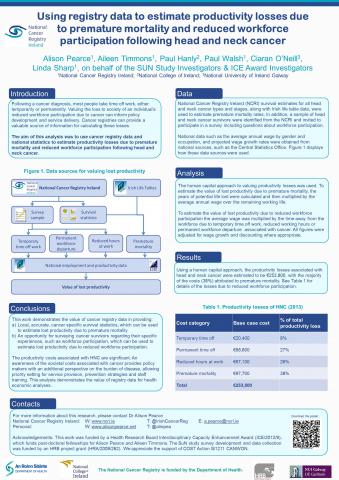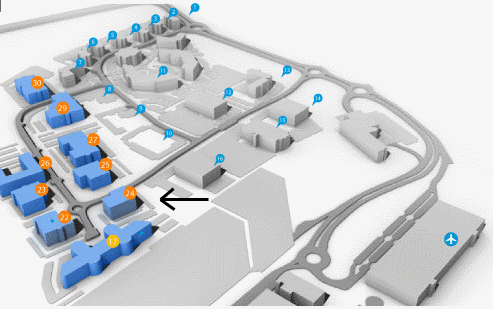Current Size: 100%
Using registry data to estimate productivity losses due to premature mortality and reduced workforce participation following head and neck cancer
Background: Valuing the loss to society of an individual’s reduced workforce participation due to cancer, including premature mortality, can inform policy development and service delivery. The aim of this analysis was to use cancer registry and survey data to estimate productivity losses due to premature mortality and reduced workforce participation following head and neck cancer (HNC).
Method: The human capital approach to valuing productivity losses was used. National Cancer Registry survival data for all HNC cancer types and stages along with Irish life table data were used to estimate premature mortality rates. In addition, a sample of HNC survivors were identified from the National Cancer Registry and invited to participate in a survey which included questions about workforce participation. To estimate the value of lost productivity due to premature mortality, the years of potential life lost (YPLL) was calculated using the annual probability of excess mortality to age 65 years and then multiplied by the average annual wage over the remaining working life, adjusted for growth and discounting. Reduced workforce participation through temporary time off work, reduced working hours or permanent workforce departure were calculated by multiplying the average wage by the time out of the workforce.
Results: The premature mortality costs associated with head and neck cancer were estimated to be €98,000 per person working at the time of HNC diagnosis. Reduced workforce participation was valued at an additional €156,000 per person working at the time of HNC diagnosis.
Conclusion: The productivity costs associated with HNC are significant. An awareness of the societal costs associated with cancer allows policy makers an additional perspective on the burden of disease, allowing priority setting for service provision, prevention strategies and staff training. This analysis demonstrates the value of registry data for health economic analyses.






